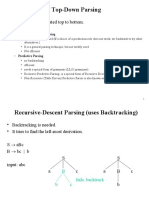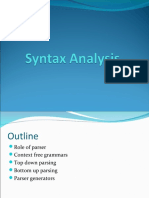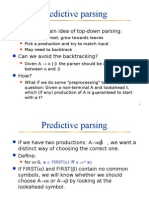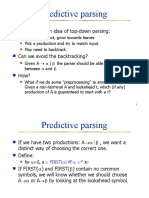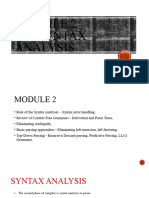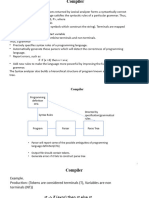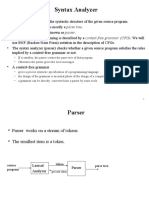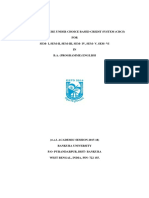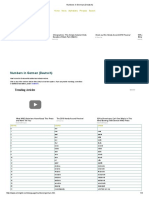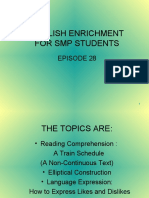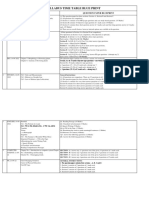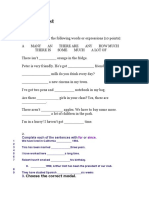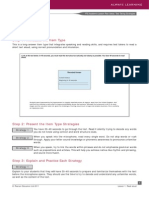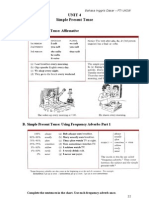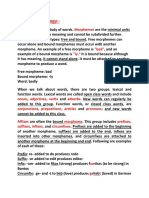0% found this document useful (0 votes)
93 views28 pagesChapter 3-Syntax Analysis-II
This document discusses top-down parsing techniques. It covers recursive descent parsing which uses backtracking, and predictive parsing which does not use backtracking but requires grammars to be in a special form called LL(1). Predictive parsing techniques include recursive predictive parsing and non-recursive (table-driven) predictive parsing, also known as LL(1) parsing. LL(1) parsing uses a parsing table and stack to parse inputs based on the grammar without backtracking. Examples of recursive predictive and LL(1) parsing are provided.
Uploaded by
Feraol NegeraCopyright
© © All Rights Reserved
We take content rights seriously. If you suspect this is your content, claim it here.
Available Formats
Download as PPT, PDF, TXT or read online on Scribd
0% found this document useful (0 votes)
93 views28 pagesChapter 3-Syntax Analysis-II
This document discusses top-down parsing techniques. It covers recursive descent parsing which uses backtracking, and predictive parsing which does not use backtracking but requires grammars to be in a special form called LL(1). Predictive parsing techniques include recursive predictive parsing and non-recursive (table-driven) predictive parsing, also known as LL(1) parsing. LL(1) parsing uses a parsing table and stack to parse inputs based on the grammar without backtracking. Examples of recursive predictive and LL(1) parsing are provided.
Uploaded by
Feraol NegeraCopyright
© © All Rights Reserved
We take content rights seriously. If you suspect this is your content, claim it here.
Available Formats
Download as PPT, PDF, TXT or read online on Scribd
/ 28
